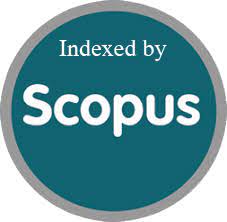Innovative drug delivery systems from aquatic biomaterials: a new era in medical treatment
DOI:
https://doi.org/10.52783/jns.v14.1562Keywords:
Aquatic biomaterials, drug delivery systems, nanoparticles, hydrogels, microspheres, biocompatibility, targeted therapy, bioavailability, marine organisms, cancer therapy, antimicrobial treatment, wound healing, drug encapsulation.Abstract
Innovative drug delivery mechanisms possess the capacity to overcome the constraints of traditional therapeutic methodologies by enhancing bioavailability, targeting accuracy, and minimizing adverse effects. Aquatic biomaterials, obtained from marine life such as algae, fish scales, and marine invertebrates, present distinct benefits for the creation of innovative drug delivery platforms. These biomaterials exhibit biocompatibility, biodegradability, and unique chemical and structural characteristics that render them suitable candidates for encapsulating and releasing therapeutic agents. This investigation examines the potential of aquatic biomaterials in the development of pioneering drug delivery systems, concentrating on their application in nanoparticle-based formulations, hydrogels, and microspheres. The analysis assesses the encapsulation efficiency, release dynamics, and therapeutic effectiveness of aquatic biomaterial-based systems, alongside their capability to target specific tissues or cells. Moreover, the biocompatibility and pharmacokinetic profiles of these systems are evaluated through in vitro and in vivo investigations. The results indicate that aquatic biomaterial-based drug delivery systems can substantially improve the stability, bioavailability, and controlled release of pharmaceuticals, with promising prospects in cancer treatment, antimicrobial interventions, and wound healing. This research emphasizes the potential of aquatic biomaterials to transform medical treatments and lay the groundwork for sustainable, effective, and personalized therapies.
Downloads
Metrics
References
Khalilov R. A Comprehensive Review of Advanced Nano-Biomaterials in Regenerative Medicine and Drug Delivery. Advances in Biology & Earth Sciences. 2023 Jan 1;8(1).
Ezike TC, Okpala US, Onoja UL, Nwike CP, Ezeako EC, Okpara OJ, Okoroafor CC, Eze SC, Kalu OL, Odoh EC, Nwadike UG. Advances in drug delivery systems, challenges and future directions. Heliyon. 2023 Jun 1;9(6).
Shahiwala A. Advancing drug delivery research: sustainable strategies for innovation and translation. Drug Delivery and Translational Research. 2025 Jan 10:1-2. https://doi.org/10.1007/s13346-024-01767-8
Kumar N, Fazal S, Miyako E, Matsumura K, Rajan R. Avengers against cancer: A new era of nano-biomaterial-based therapeutics. Materials today. 2021 Dec 1; 51:317-49. https://doi.org/10.1016/j.mattod.2021.09.020
Choonara YE, du Toit LC, Kumar P, Kondiah PP, Pillay V. 3D-printing and the effect on medical costs: a new era? Expert review of pharmacoeconomics & outcomes research. 2016 Jan 2;16(1):23-32. https://doi.org/10.1586/14737167.2016.1138860
Thiruvengadam V, Akinsorotan AM. Comparative and regression analysis of Nile tilapia, Oreochromis niloticus (Linnaeus, 1758) (Family: Chchlidae) from Bugungu, Eastern region, Republic of Uganda, East Africa (0 23'31.92" N 33 13'51.95" E). International Journal of Environmental Research and Education. 2022 Dec 10;3(1):73-8.
Udhayakumar A, Ramya KC, Vijayakumar P, Balamanikandan A, Saranya K. Reversible Vedic Direct Flag Divider in Key Generation of RSA Cryptography. Journal of VLSI Circuits and Systems. 2024 Oct 10;6(2):75-83. https://doi.org/10.31838/jvcs/06.02.08
Kumar TS. Security Challenges and Solutions in RF-Based IoT Networks: A Comprehensive Review. SCCTS Journal of Embedded Systems Design and Applications. 2024;1(1):16-9.
Raktur H, Jea T. Design of Compact Wideband Wearable Antenna for Health Care and Internet of Things System. National Journal of Antennas and Propagation. 2024 Aug 17;6(1):40-8. https://doi.org/10.31838/NJAP/06.01.06A
Abdullah D. Leveraging FPGA-based design for high-performance embedded computing. SCCTS Journal of Embedded Systems Design and Applications. 2024;1(1):29-32.
Salameh AA, Mohamed O. Design and Performance Analysis of Adiabatic Logic Circuits Using FinFET Technology. Journal of VLSI Circuits and Systems. 2024 Sep 12;6(2):84-90. https://doi.org/10.31838/jvcs/06.02.09
Admodisastro VA, Ransangan J, Ilias N, Tan SH. Oyster farming potential in Sabah, Malaysia. International Journal of Aquatic Research and Environmental Studies. 2022 May 10;2(1):17-22. https://doi.org/10.70102/IJARES/V2I1/3
Ariunaa K, Tudevdagva U, Hussai M. FPGA based Digital Filter Design for faster operations. Journal of VLSI circuits and systems. 2023;5(02):56-62. https://doi.org/10.31838/jvcs/05.02.09
Gandomkar H, Nazari S, Salahi Ardakani MM, Kazemi E. Comparison of genome size of diploid and tetraploid of rainbow trout (Oncorhynchus mykiss). International Journal of Aquatic Research and Environmental Studies. 2022 Nov 10;2(2):7-10.
Usikalu MR, Okafor EN, Alabi D, Ezeh GN. Data Distinguisher Module Implementation using CMOS Techniques. Journal of VLSI circuits and systems. 2023;5(01):49-54. https://doi.org/10.31838/jvcs/05.01.07
Downloads
Published
How to Cite
Issue
Section
License

This work is licensed under a Creative Commons Attribution 4.0 International License.
You are free to:
- Share — copy and redistribute the material in any medium or format
- Adapt — remix, transform, and build upon the material for any purpose, even commercially.
Terms:
- Attribution — You must give appropriate credit, provide a link to the license, and indicate if changes were made. You may do so in any reasonable manner, but not in any way that suggests the licensor endorses you or your use.
- No additional restrictions — You may not apply legal terms or technological measures that legally restrict others from doing anything the license permits.










